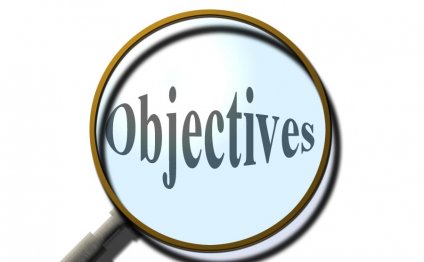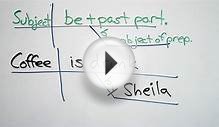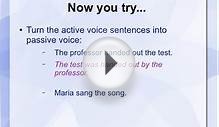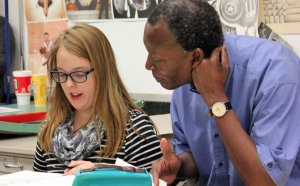
Active and passive Voice lesson plans
After reading hundreds of passive essays, I slumped into a bad writing induced coma, unable to activate my limbs. Luckily Mrs. Mildred down the hall read me her students' essays and I revived. She had taught her students the difference between active and passive voice.
-
Setting the Stage: Active vs Passive
I began class with a simple question: would you rather watch Lebron James play basketball or some fat slob in row C eat popcorn? Other than the two unintelligent Kobe Bryant fans, the class shouted, "Lebron James! He's the best! Who wants to watch some fat guy eat popcorn?"
My eyes enlarged and I shot fire out of them: one flame for each student. The classroom burned as I unleashed my demoniacal revenge for being peppered with essays full of passive sentences, the writing equivalent of the popcorn eater in the third row, when I could have been reading essays with active voice, the writing equivalent of Lebron James.
If I ever teach again, I'm going to explain the difference between active and passive voice before my students write their essays and I turn them into ashes with fiery darts.
Just in case you're interested in hiring a writing teacher, here's what I came up with:
-
Understanding Active vs. Passive Voice
Active voice is the voice used to indicate that the subject of the sentence is performing the action or causing the action. Passive voice is the voice used when the subject is the recipient of the action. Strong writing uses active voice. Passive voice should only be used in the following instances:
- When intentionally hiding the subject of the sentence. For example, a politician might say, "Mistakes were made."
- When intentionally truing to minimize the guilt of the subject. For example, a cheating husband might respond, "Adultery was committed by me."
- When passive voice better emphasizes the main point of the passage. For example, Children were harmed by unlicensed bus drivers.
-
Active vs. Passive Voice in Student Writing
Knowing when to use active and passive voice does not mean students will use it correctly. Show them. Instruct them to copy the following in their notebooks. If they still don't improve their use of passive and active voice, have them make phylacteries.
- If the subject receives the action or is not doing the action, the voice is passive.
- Passive voice is usually wordier.
- If the subject performs the action, the voice is active.
- Active voice is preferred because it is direct and concise.
- Active voice is the equivalent of watching Lebron James.
- Passive voice is the equivalent of watching corn grow.
- Active voice creates interest.
- Passive voice creates boredom, world hunger, and depletes the ozone layer (OK, I made the last two up).
- Passive voice contains a lot of to be verbs.
For additional suggestions on, follow this link.
-
Procedures
- Instruct students to copy in their notebooks the differences between passive and active voice. Provide examples.
- If revising an essay, pair students.
- Instruct them to read their rough drafts and circle passive voice constructions.
- Instruct each pair to exchange rough drafts and identify passive voice constructions in their partner's writing.
- Rewrite paragraphs in active voice.
- Share revisions with the class.
- Motivate students with a paragraph challenge.
- If these suggestions don't work, try my shooting flames from your eyes trick explained above and imagine LeBron James in the NBA Finals.
This lesson was inspired by Lebron James and
YOU MIGHT ALSO LIKE



Share this Post
Related posts
Voice lesson plans
Directions Days 1 and 2: Identifying Strong Voice in Picture Books Step 1: Explain to students that writing is more interesting…
Read MoreAfrican Music lesson plans
In this lesson, students will gain an overview of the art and music that represent the diverse regions of Africa. They will…
Read More










